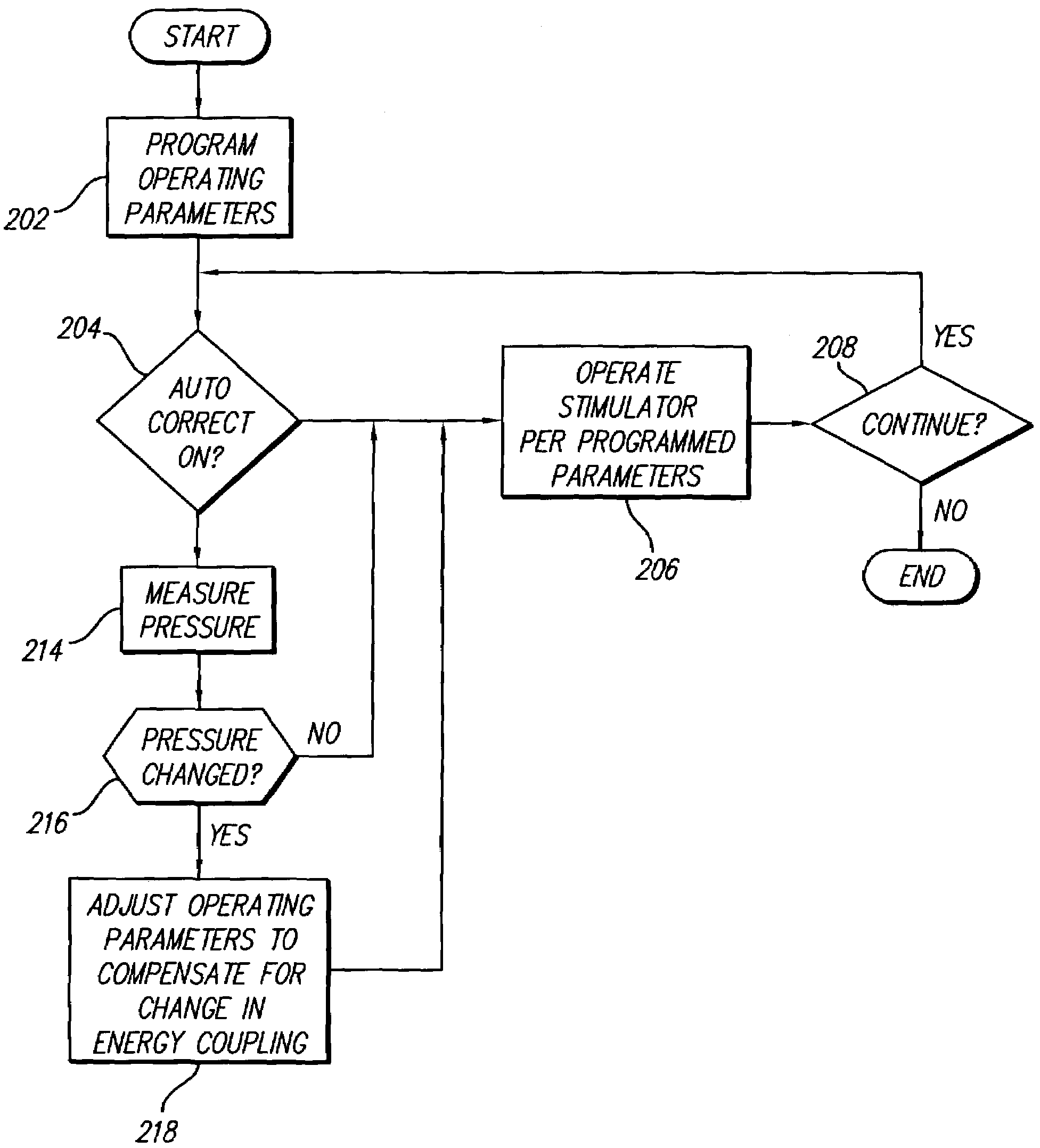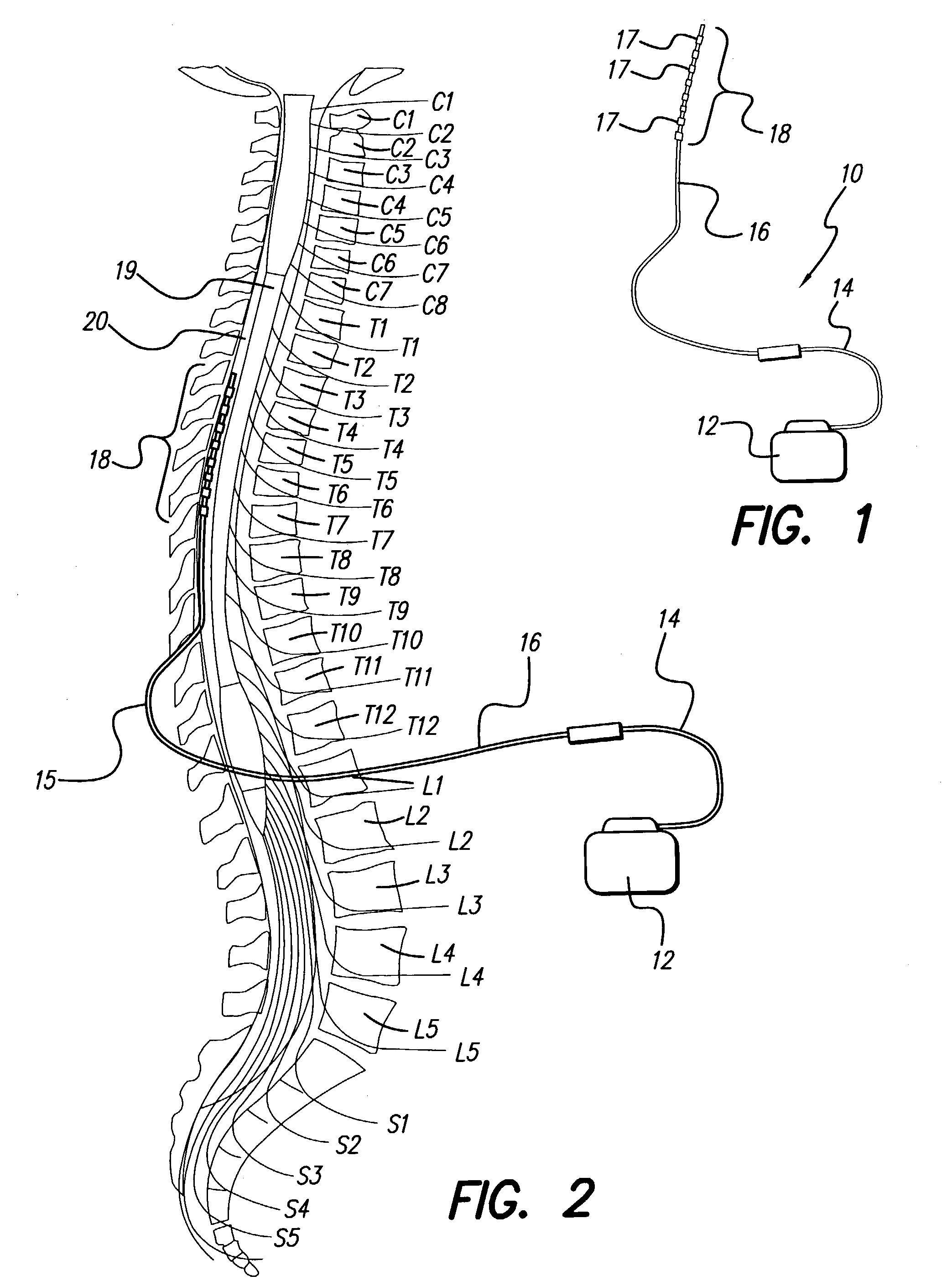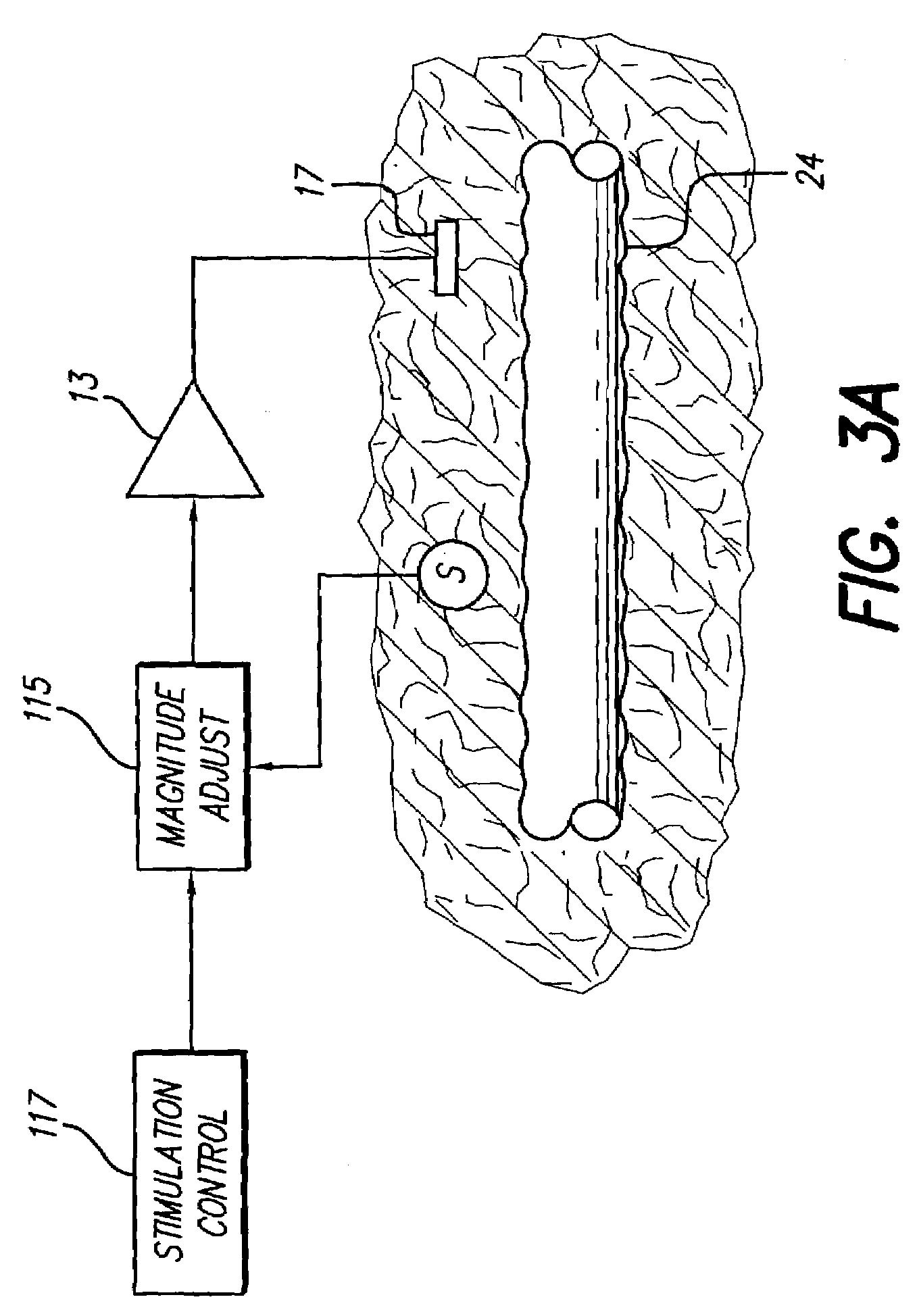Neural stimulation system providing auto adjustment of stimulus output as a function of sensed impedance
a neural stimulation and output amplitude technology, applied in the field of neural stimulation systems, can solve the problems of insufficient evoked stimulus, more likely to be painful stimulus, and more likely to be over-stimulated, so as to minimize the occurrence of over-stimulation or under-stimulation, reduce the occurrence of over-stimulation, and achieve comfortable and effective paresthesia
- Summary
- Abstract
- Description
- Claims
- Application Information
AI Technical Summary
Benefits of technology
Problems solved by technology
Method used
Image
Examples
Embodiment Construction
[0029]The following description is of the best mode presently contemplated for carrying out the invention. This description is not to be taken in a limiting sense, but is made merely for the purpose of describing the general principles of the invention. The scope of the invention should be determined with reference to the claims.
[0030]A representative neural stimulation system 10 is shown in FIG. 1. Such a system typically comprises an Implantable Pulse Generator (IPG) 12, a lead extension 14, an electrode lead 16, and an electrode array 18. The electrode array includes a plurality of electrode contacts 17 (also referred to as “electrodes”). The electrodes 17 are arranged, for example, in an in-line array 18 near the distal end of the lead 16. Other electrode array configurations may also be used. The IPG 12 generates stimulation current pulses that are applied to selected ones of the electrodes 17 within the electrode array 18.
[0031]A proximal end of the lead extension 14 is remova...
PUM
 Login to View More
Login to View More Abstract
Description
Claims
Application Information
 Login to View More
Login to View More - R&D
- Intellectual Property
- Life Sciences
- Materials
- Tech Scout
- Unparalleled Data Quality
- Higher Quality Content
- 60% Fewer Hallucinations
Browse by: Latest US Patents, China's latest patents, Technical Efficacy Thesaurus, Application Domain, Technology Topic, Popular Technical Reports.
© 2025 PatSnap. All rights reserved.Legal|Privacy policy|Modern Slavery Act Transparency Statement|Sitemap|About US| Contact US: help@patsnap.com



